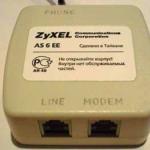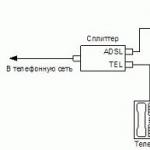The temperature in the room in which the cans are located cannot be lower than 5 ° C. They must be very carefully protected both from frost and direct heating in the sun. Otherwise, the paint will change its physical properties: it will not have a uniform consistency, lumps will appear in it and it will become unusable.
It is very important that the container with the paint is tightly closed at all times, otherwise its contents will dry out. Sometimes it happens that in a jar that has been standing still for a long time, a thin layer forms on top of the paint, for example, resin, which looks like clear jelly... Don't worry about it. It is enough to mix the contents of the can thoroughly before use and the paint will become homogeneous.
Criterias of choice
Homeowners (especially those located on streets with heavy traffic or near an industrial area) often complain that the facades turn gray a few months after painting. Therefore, they are looking for products that are resistant to pollution.
There are no paints on which dirt does not settle, but there are ones thanks to which it does not absorb into the walls and is easy to wash off. These paints form hydrophobic films that are self-cleaning. As a result, dirt and moisture are not absorbed into the wall, but remain on its surface. They are easy to remove with water: they are usually washed off by rain.
The hydrophobic properties of the paint build up after coloring (it stabilizes after about 28 days). Silicone paints "repel" dirt best of all, well - acrylic and silicate, modified with silicone polymers. Unfortunately, there is no information on the packaging about how high the resin content is in the paint (and this has a significant effect on the effectiveness of the paint), so it is better to use products that have been tested in practice by someone from your acquaintances.
If, two years after painting, the facade remains clean and throughout this time retains its original color, it is worth purchasing a product of this particular brand.
Attention! When choosing a paint, pay attention to the degree of gloss: glossy ones are more resistant to dirt - rain will better wash away dirt from them. Another secret: on a surface painted with a darker paint, dust is less noticeable.
On the packaging of almost every paint there is information that it is vapor-permeable. Manufacturers do this in an effort to meet customer expectations: everyone wants their home to be “healthy” and to “breathe”.
There is one more nuance due to which this parameter is given such a value: the denser the outer shell of the facade is, the more inevitably condensation of water vapor will occur under it, which, as you know, moves from inside the house to the outside. As a result, paint may begin to flake off from the substrate. The likelihood of such an outcome is especially high if the base was not primed before painting.
Preparation of the base
So that the wall retains for a long time fresh look, it must be well prepared for painting. It doesn’t matter if it’s a new home or renovating the façade of an old home, it’s always safer to use a primer first. The type of primer must be matched to the type of paint with which the facade will be painted.
The primer consists mainly of a binder (film former), so it is usually colorless. The undercoat will even out the water absorption capacity of the substrate and increase the adhesion of the paint. True, these are additional costs, nevertheless, they will certainly pay off, since the consumption of paint for the decorative layer will decrease, and, in addition, such a tool will facilitate staining.
Before priming, you need to check if the base is crumbling. It must be strong and dense, otherwise the paint will flake off. You can independently make a simple assessment of the bearing capacity of the base. A piece of transparent stationery tape is glued onto it and tear off after a minute. If there are no paint residues or base particles on the tape, it can be considered durable.
Fresh. It takes time between plastering and painting for the wall to dry completely. Typically, you will have to wait at least 30 days. If you start painting earlier, and on the wall, for example, lime plaster, then the lime will be aggressive towards the paint, and therefore it will not be possible to obtain a uniform color.
Old paint. Carefully check if old paint is peeling or bubbling. If peeling, it must be completely removed by scraping with a spatula and then rinsing off the remaining paint with water under pressure. Then a primer should be applied. If the old paint is in good condition, it is not necessary to prime it - it is enough to rinse it with water and, of course, wait until it is completely dry.
Next, the prepared facade is covered with finishing paint twice. It must be correctly matched to the type of solvent and binder, as the wrong combination can cause the paint to not adhere.
Color matching
Many manufacturers help to choose the paint by providing samples in which two or three colors are matched to the main color chosen for the walls for painting the elements of the facade. This makes the task much easier for people who have no experience in drawing up color combinations. You can also use a color palette (fan or color atlas).
If it is difficult to determine until the end which of the two shades you like will look better on the facade (after all, the same color can look completely different in the shade and in the sun), you can buy or get a free sample of the selected paints and make a test on the facade of the house ...
Another tool in color matching is computer program, into which you can insert a photo of your own house and check how it will look with different colors of walls, roofs, windows and other facade elements.
If you choose a color using the example of a sample, buy a paint that is lighter than the one that you like the most, since on a large surface the color will appear slightly darker than on the sample. If, nevertheless, you cannot decide on a shade, then you can buy two large containers of paint of different tones. After painting a large surface, it will be easier to decide which tone to choose. Don't worry - the second coat of paint will completely cover the paint of a different shade, and the facade will be uniform.
Many developers, choosing a color scheme for the facade of their house, face difficulties: how to achieve a harmonious combination of all elements of the facade, emphasize the individuality of the building and not oppose it to the environment? In a situation where the services of an architect are not available, experts recommend following a few simple and reasonable rules that will allow you to get a decent result when decorating a house:
- For painting the facade, it is better to choose a light pastel paint. Such a facade will more harmoniously fit into the surroundings and it will be easier to match the color of the roof to it. In this case, monotony can be avoided by using two shades of the same color (for example, to emphasize window and door openings and other elements of the facade with lighter paint).
- As a rule, the color of the walls should be lighter than the color of the roof. Of course, the opposite option is possible, but its implementation requires a serious aesthetic justification and professional intervention of a designer and architect.
- If it is assumed that the facade will be multi-colored, then when choosing colors and materials for finishing, one should look for a "common denominator" so that their combination is harmonious - this will allow to streamline any variety.
- Even the most dull facade can be revived and transformed if you skillfully highlight its details with color - window and door openings, balustrades, window layouts (spros), chimney, plinth, etc. It is worth taking advantage of this opportunity, not forgetting, of course, about the general stylistic unity.
- With the help of paint, it is possible to emphasize and mark the horizontal division of the facade, thereby changing the overall architectural impression of the object. For example, if the upper part of the house (roof and attic floor) is painted in a darker color than the lower one, the building will acquire features of solidity and massiveness. If the upper floor is lighter than the lower one, the building will appear taller and more graceful.
- It must be remembered that the building is inseparable from the external environment and therefore it is very important that the house does not fall out of the context of the general development and natural landscape.
The above visualizations of the project can serve as an illustration of the above.Murator М52а , demonstrating the variety of possible color solutions for the facade and roof, changing which radically change the architectural image of the building.
Facade coloring determines appearance buildings, its aesthetic perception. In addition, a layer of facade paint protects the walls from the environment, which means it increases the durability of the building.
But facade paint can also contribute to the accumulation of moisture in the wall, the destruction of the house. The paint on the facade must retain its properties and color for a long time. Therefore, it is very important right choice materials for facade finishing. What are the parameters for choosing facade paint for outdoor use?
What paint to paint the house outside?
To keep the paint on the facade for a long time, it must be selected depending on the base material, to which it should be applied.
Table of applicability of facade paints to the material of the wall surface.
| Wall material |
Facade paint base |
|||||||
|
Vinyl |
Acrylic |
Silicone |
Acrylic-silicone |
Limestone |
Silicate |
Polysilicate |
Cement |
|
| Concrete | No | Yes | Yes | No | Yes | Yes | No | |
| Ceramic bricks | ||||||||
| Silicate brick | ||||||||
| Cement and cement-lime plaster | ||||||||
| Silicate plaster (based on liquid glass) |
yes (only after priming the wall) |
|||||||
| Lime plasters and paints | ||||||||
| Organic plasters and paints (on artificial resins) | ||||||||
Usually, facade paint is selected following a simple rule, what kind of plaster, such is the paint. For example, if the plaster on an organic binder is silicone, then silicone paint is chosen. And if the plaster is cement-lime (mineral), then mineral paint is used.
Which facade paint is less dirty?
Water-repellent paint layer is less dirty and easy to cleanSurfaces covered with any facade paint get dirty, but some of the paints create a self-cleaning surface.
After drying, a water-repellent film forms on the surface of such paint, preventing the penetration of moisture and dirt into the lower paint layer. A facade painted with this paint can be cleaned even with a little rain. The paint layer acquires water-repellent properties about a month after being applied to the facade.
This property of paints is of great importance for houses, the facades of which face the street with heavy traffic and can become dirty. If the paint on such a facade does not have the property of self-cleaning, after a few months it will take on a gray tint.
The self-cleaning surface is created by silicone-based facade paints for outdoor use, as well as acrylic and silicate paints modified with silicone polymers.
The more organic resins there are in the paint, the better the facade paint surface is cleaned. As a rule, there is no information on the amount of resins in the paint on the packages of paints and any other information on the self-cleaning properties of the paint surface.
To select a paint with high self-cleaning properties of a particular manufacturer, one has to rely on the experience of using facade paint by neighbors or the opinion of a contractor.
The above facade paints for outdoor use are also easier to clean by hand, using water and a brush.
In addition, these paints are most resistant to industrial chemical emissions and acid rain.
What paints mask small cracks in the walls?
Facade special thick paints with additives of polymer fibers on acrylic, acrylic-silicone, polysilicate base help hide cracks and scratches up to 0.5 mm wide.
Small scratches on old paint or plaster are also easily hidden by paints with nanoparticles, which, concentrating on the outer surface of the paint layer, create an outer elastic layer on the wall surface.
Textured facade paints, about which you can read a little below, they also mask very well small defects in the surface of the wall of the house.
How to protect walls from fungus?
Walls of houses built on plots with high level groundwater, in flooded areas, close to water, are most susceptible to fungal attack. Walls that are in the shade and insufficiently ventilated are especially affected.
Lime paints have antiseptic properties. But they are not applicable for all bases, and the color palette of such paints is poor. An alternative solution is to use acrylic-based bioprotective paints that contain antiseptics.
You can do it differently. Before painting, apply a primer to the wall, which contains antifungal drugs, and only after that paint the wall with facade paint.
What is a vapor-permeable facade paint?
The texture of the wall surface obtained as a result of painting depends not only on the composition of the paint, but is largely determined by the tool used for painting - a brush, spatula, brush, roller with a long nap or pneumatic spray.
Is thermal insulation paint a hoax !?
In the construction market, some sellers are annoyingly offering to buy heat-insulating paint. Most often this paint is called something like this: liquid glass-ceramic (or simply ceramic) thin-film thermal insulation coating, or in short - liquid thermal insulation. The product is offered under various trade names.
The retailers claim the paint is based on the now fashionable nanotechnology for use in space projects. A layer of paint 1 mm thick supposedly replaces 50 mm of polystyrene in terms of heat-saving properties. It is recommended for insulating everything, anything, including the facade.
They may even show certificates and other documents. The attentive and meticulous reader will not find in these documents confirmation of the exceptional heat-saving properties of the coating. It was possible to find the results of tests of the thermal insulation properties of paint of one well-known brand, which indicate that a layer of such paint 1 mm thick. can only replace 1.6mm foam.
The practice of application also does not confirm the wonderful heat-saving properties of these paints.
Liquid insulation on the façade will not bring significant savings in heating costs.
How to paint a house from the outside with facade paint for outdoor use - read on the next page.
Articles on this topic:
More articles on this topic

To paint new house or to renew the facade of the old one, it is not at all necessary to invite a team of professionals. It is enough to take a few correct steps and have the appropriate tool - and you can add beauty to the house yourself. The exterior paint is designed to help with this. How to choose it and calculate the required amount, we will consider in this article.
Types of facade paints
In terms of composition, facade paints are divided into two types: water-soluble (latex, acrylic) and based on organic solvents(oil, alkyd). In latex paints, most of it is water, and the liquid in oil paints consists of petroleum distillates and other organic solvents. There are also a number of environmentally friendly mineral paints that are made from lime and cement.
According to the type of reflective surface formed, they are divided into matte, semi-gloss and glossy (glossy) paints. All of them contain a pigment additive, plasticizers and binders. Depending on the filler, water-soluble paints are divided into latex (based on silicone (on silicone resins) and silicate (on "liquid glass"). 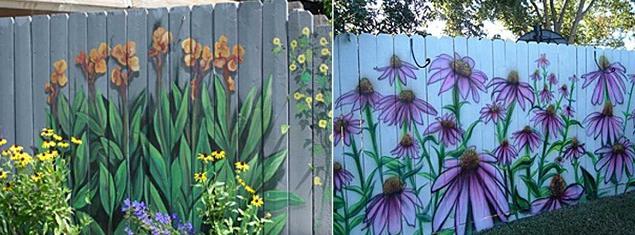
Not only the walls of houses need care, but also other elements: fences, benches, fences. For coloring them, the price is also suitable.The price for it is slightly higher than for material for interior work, since in its composition it contains a greater amount of resin (for moisture resistance and durability) and more pigment (for color).
Selection of facade coatings
One of the main differences between interior and exterior paints is that the latter must be applied to a very specific type of surface.
The range of exterior surfaces includes materials such as clapboard, wood, brick, plaster and of course old paint. A combination of these surfaces can be found on many homes. Each such material requires a specific facade paint for outdoor use. How to choose it correctly? After all, the material for outdoor work must be resistant to atmospheric influences, have long-term lightfastness and vapor resistance.

To avoid problems, old paint should be overcoated with the same type. But if there is no exact certainty about the type of the old layer, then it is safer to paint with an alkyd-based pigment. Ideally, you need to remove the old or damaged paint layer, sand, sand and prime. Depending on the thickness of the paint, it is put in one (thick) or in two layers (more liquid).
Facade paint: technical characteristics
| Type of | Specifications | Peculiarities |
| Latex, acrylic | Easy to remove excess, durable, dry quickly, can be applied even on damp surfaces, incompatible with previous oil-based finishes, elastic. They practically do not smell. Water-soluble, used for processing wood, brickwork, plaster and properly primed metal surfaces. | They are not diluted, with careful work you can get an even thin layer. Do not crack over time. These are breathable paints that are resistant to fading in the sun. |
| Oil, alkyd | They dry very slowly (from 12 to 48 hours), have a strong smell, are difficult to clean, but they are durable and good adhesion, especially on whitewashed surfaces. They are painted in one layer, cleaned off with a solvent. Created on the basis of synthetic resin, they fit well on old multi-layer alkyd coatings and chalk, have excellent hiding power. Fresh masonry must not be stained either. | The thick consistency makes it more difficult to apply, but it adheres better than latex paint. The coating must be protected from rain until it dries completely. On direct sun the paint fades, over time it can crack due to oxidation. |
Get any shade? Easily!
Big variety colors, bright colors and muted shades, shine and dullness - the fulfillment of any desires. All this is facade paint for outdoor use. Sales consultants will always advise how to choose a color for finishing, this is done using a special palette. This color range is provided for each specific type of paint. In the paint and varnish sales departments, there are special tinting machines that, by mixing various pigments, will help to obtain the desired shade.
How much paint is needed
The consumption of facade paint is directly affected by the size of the painted surface, its condition, type of coating, age. For example, siding, shingles, masonry, or plastered walls can require 10-50 percent more paint than smooth, flat walls. Also, twice the consumption can occur when using airless sprays, which cover the surface in the equivalent of two coats of paint. Paint on concrete requires a large consumption due to the structure of the surface to be painted.
Calculation of the required volume
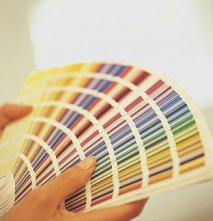
To calculate the consumption of facade paint for a house, it is necessary to calculate the area of the painted surface by multiplying the perimeter of the building by the distance from the foundation to the eaves. Then, for each pediment, measure the distance from the eaves to the peak, multiply by the width from the middle to the wall. The resulting number is multiplied by two, and the result is divided by half. For clarity, the diagram is shown in the figure. From the resulting final figure, it is necessary to subtract the areas of door and window openings.
If the house has siding edging, then add another 10 percent to the result. In the case of painting a textured surface, an additional 20 percent is added for consumption. Well, if the wall is porous (brick or plaster), then it can absorb 50 percent more paint. A little less paint will "take" on concrete.
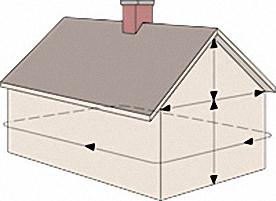
After calculating the required amount of material, you need to add another can for insurance, especially when buying in advance, since then the desired shade may not appear. The remaining paint can be used for other work.
Choice of gloss level
The moment has come when the calculation was made and the facade paint for exterior work was selected. How do you choose which works: matte, glossy or semi-gloss?
Matte paint is widely used to cover the walls of houses. This is a porous layer that does not hide irregularities well, so the surface must be well prepared for painting.
The choice of the ideal gloss level is dictated by both aesthetic and practical considerations. From an aesthetic point of view, a glossy, or shiny, surface generates heightened visual interest, although it is more suitable for interiors. On the practical side, such a coating, due to its reflectivity, can hide minor surface imperfections, so it can be used for finishing doors and windows. In care, a glossy layer is much easier than a matte one, since it does not have a porous layer.
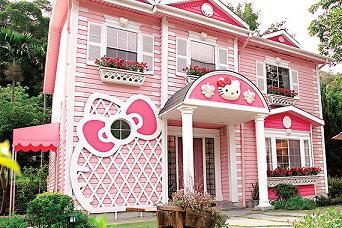
The third variety includes coatings that combine the properties of the other two - these are semi-gloss facade paints. Customer reviews indicate that these materials are in great demand due to their versatility.
Preparation for painting
Before painting, you must remove all external elements: flower pots, boxes, furniture, lamps. What is impossible to remove must be covered. Next, the surface is prepared: the cracks are closed, sanded and cleaned of old layers, primed. After the primer is dry, mix the paint thoroughly and start painting. For this operation, rollers (for large areas) and brushes (for corners, finishes, relief, etc.) are used.
Front paints price
On the domestic market of paints and varnishes it is very popular and is represented by a wide assortment range of "Tikkurila" - Finnish facade paint. The price of this product is in the high price range, but the excellent quality of the material justifies it. 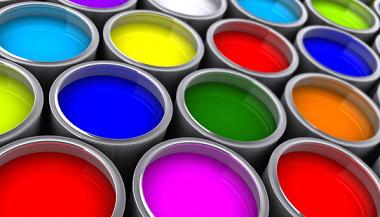
V last years the Russian paint of the Tikkurila Euro trademark has gained popularity - a safe, environmentally friendly material that is suitable for painting almost any surface. In terms of technical characteristics, it is not inferior to that made by the Finns, but it costs much less.
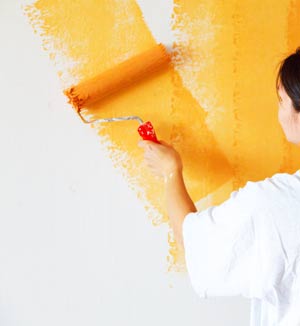
Facade paints: types and characteristics
There are many varieties of facade coloring materials. Moreover, their quality indicators, respectively, will not be the same. It should be considered in order to subsequently navigate in the selection of the most suitable material for processing the facade.
Vinyl paints
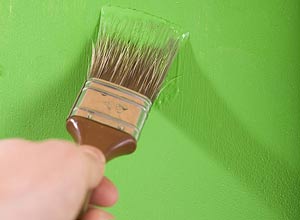
Previously, quite popular vinyl and polyvinyl acetate paints are not in great demand today due to the availability of acrylic materials on the market of paints and varnishes. A more familiar name for many vinyl paints is facade water-dispersion.
When used in finishing works this material must be diluted with water... A definite plus of vinyl paint is its affordable price. As for the quality indicators, they are very doubtful. Water-dispersive materials for facade coating quickly lose their performance properties when exposed to chemicals, mechanical damage. After drying, vinyl paint will shrink strongly. Mold can quickly form on the painted surface.
Acrylic-based facade paints

Acrylic and acrylic-silicone paints, otherwise called latex paints, are based on organic acrylic resins. This view facade paints in modern construction is in great demand, since their quality characteristics meet all the requirements of reliability.
Low water permeability latex paints allows the painted surface to remain intact and not contaminated for a long time. At the same time, the vapor permeability of the material is not too high, which somewhat reduces its service life.
Benefits acrylic facade paints are:
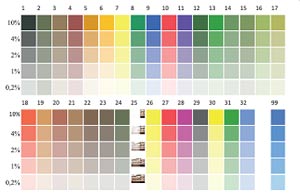
- a large selection of colors and saturation of shades;
- maintaining the brightness of the color of the painted surface for a long time;
- tightness and elasticity of the applied layers;
- high abrasion resistance.
Acrylic silicone paints are one of the subtypes of latex coloring materials. They are distinguished by an increased level of vapor permeability, but lower absorption. In acrylic-silicone solutions, the qualities of each of the types of paints are successfully combined, therefore their durability is significantly increased, and the painted surfaces show the ability to self-cleaning.
Features of silicone facade paints
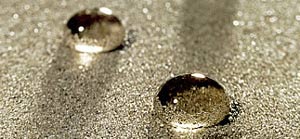
Silicone facade paints have several varieties: organosilicon, silane, siloxane. This type of coloring materials is considered hydrophobic, since moisture from precipitation is not absorbed into the wall surface, but simply flows down. Hydrophobicity makes it possible to significantly increase the strength and durability of the facade of the building, moreover, due to the property of repelling moisture, the surface is less polluted.
The vapor permeability of silicone paints with a microporous structure allows moisture to quickly pass through the painted layers and evaporate from the outside. Another property that distinguishes silicone facade mortars is excellent adhesion.
Facade paints of other types
Several other types of facade paints are known, which are no less in demand among consumers.
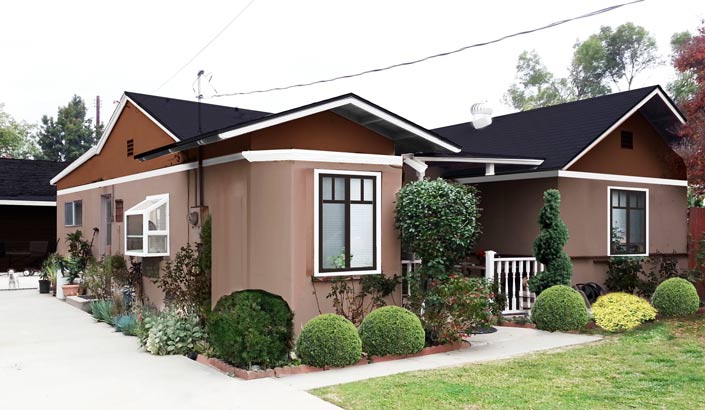
Lime paints
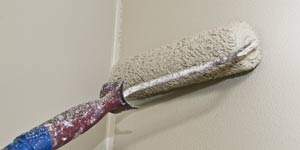
Modern manufacturers offer the consumer both ready-made solutions of lime paints and pastes, which must be diluted with a certain amount of water before use. In the composition of such paints there are no organic resins, but there are substances that contribute to the disinfection of the surface, due to this the painted facade is not exposed to the formation of mold and mildew... Most often, lime paints are used for restoration work with facades covered with lime-based plaster ( We recommend reading the article about in addition to this article). The most common shades are white and pastel.
Silicon (silicate) paints
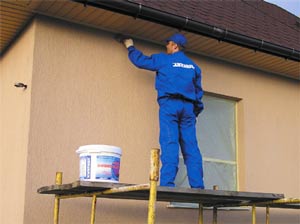
Silicate paints have a fairly simple composition, however, their durability and abrasion resistance are distinguished by high rates. The adhesive properties of silicon solutions are best manifested, but if there is a need to restore the facade, it is rather difficult to remove such paint... Silicate paint is practically immune to fungal and mold infections, to the negative effects of atmospheric precipitation.
Polysilicon (silicate-ash) paints
This advanced modification of silicon (silicate) paints contains silicone resins. They are easy to apply to the surface, they have good vapor permeability and are highly resistant to moisture. It is recommended to use polysilicon paint for painting facades covered with dry cement or cement-lime plaster.

Cement paints
Such paints are commercially available in the form of a dry mixture, which must be diluted with water. The binder of cement paints is white Portland cement with polymer additives.... To add pastel shades to the original white dyes can be added to the material for painting the facade. Cement paint has high vapor permeability and moisture holding capacity.
The most popular manufacturers of facade paints
It is no secret that paints of the same composition of different brands have their own quality features. So it makes sense get acquainted with the lines of facade paints from manufacturers popular on the market.

- "Olympus" is a trade mark representing structural façade paint based on acrylic with quartz filler. This material is suitable both for painting facades and for processing external and internal walls, ceilings, basement rooms. Vandal-proof paint "Olympus" is indispensable for coating surfaces in rooms with increased traffic and load. There are several ways to apply paint, resulting in a surface with a different texture. Perfect for painting concrete, brick, drywall, chipboard, fiberboard, walls treated with putty or plaster.
- "Alpina"- facade paint with high adhesion, good hiding power and excellent wear resistance. To give Alpina the desired shade, it is recommended to use colorants from the same manufacturer. Facade paint can be applied without problems, is characterized by a low level of water absorption and good diffusion.
- Facade silicone enamel KO-168 often used to cover concrete, brick, wood and asbestos-cement surfaces for decorative and protective purposes.
- Facade paint ХВ-161 characterized by fast drying (about 4 hours at an air temperature of +20 degrees). It is used to paint the facades of various types of buildings.
- Acrylic facade paint AK-124 contains white spirit and targeted additives, due to which it dries in a short time. VD-AK series paints have excellent elasticity and durability (about 10 years), suitable for coating carefully prepared surfaces. The material is moisture-proof from the outside, vapor-permeable from the inside, resistant to alkalis, smoke, industrial gases.
- "Caparol"- facade paint, characterized by thermoplasticity, low water absorption. These properties provide excellent surface resistance to various types of dirt: dust and dirt are washed off at the first rain.
- "Optimist"- water-dispersion facade paint based on acrylic, which shows itself well both when painting facades and when coating internal surfaces in a building. Qualitative characteristics of "Optimist" make it possible to use the paint in climatic conditions corresponding to most regions of Russia.
A little about the colors of Tikkuril
Commercials for Tikkuril paints do not leave domestic TV screens. But not only because of advertising, facade paints from a Finnish manufacturer are so popular. Their quality characteristics are in many ways superior to materials of other brands. The most popular facade paints from Tikkuril are Kivisil and Novasil.
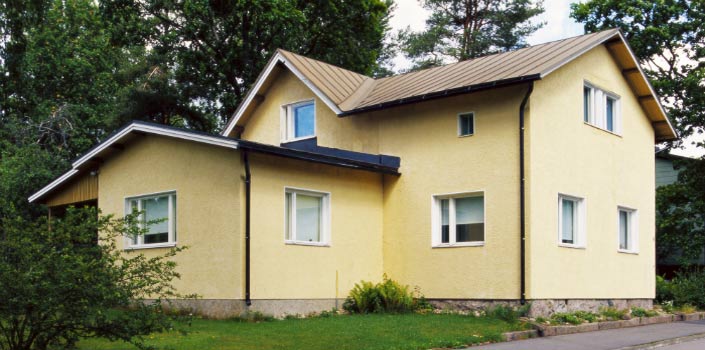
The choice of facade paint is important. The paint determines the appearance of the house, its aesthetic perception. It also protects supporting structures from the damaging effects of the sun, precipitation, and wind.
There is also an important function of the facade paint - not to prevent the walls from drying out from the moisture coming out of the room. If the paint traps water vapor, the structures will lose their appearance, quickly deteriorate from moisture ...
There are many varieties of facade paint, you can "drown" in this variety. Facade paint is distinguished primarily by its base. The most popular are cement, silicone, silicate, acrylic paints.
What to look for when choosing a facade paint?
The basic rule for the selection of facade paint
The choice of facade paint is primarily influenced by the base material on which it will be applied."What kind of plaster, such facade paint is applied" , - for example, cement-based paint is applied to cement plaster. This rule usually works well. The result is a durable, reliable façade surface.
But if there is a desire and need to take advantage of the results modern technologies and to get additional useful qualities of the facade surface, then you need to make a complicated choice of facade paint.
What surface qualities of the facade might be required?
For example, the following is popular:
- self-cleaning facade;
- biologically resistant coating;
- concealment of small cracks and chips on the base;
- bright not fading coloring;
- new surface texture, sun-reflecting coating, etc.
But above all, the coating on the facade must be vapor-permeable "breathable" for certain types of foundations;
Below is the compatibility table different types facade paints with a base.
Facade paint can be selected according to this table.
We will consider additional properties of facade paints that may be useful later.
Facade paint should not interfere with the "breathing" of the wall
If the facade paint significantly blocks the exit of steam from the wall to the outside, then this will lead to very serious consequences - waterlogging of structures, water accumulation in them. The appearance of mold on the facade and the peeling of paint is the most harmless consequence of this ...If only vapor barrier materials are used in the wall structure, such as dense concrete and its dense varieties (cinder concrete ...), as well as brick, foam plastic, extruded polystyrene foam, foam glass, etc. then you can use facade paint with any resistance to steam movement.
But if the load-bearing wall is made of materials with high vapor permeability, such as porous ceramics, aerated concrete, large-porous expanded clay concrete, etc., or (and) insulation materials with high vapor permeability are used, such as mineral wool, aerated concrete, then the paint layer must be characterized as "with high vapor permeability".
Which paint will have high vapor permeability?
Manufacturers always give the vapor permeability characteristics for the finished facade paint layer of the recommended thickness. But there is no single standard for this characteristic. Therefore, either the air thickness Sd equivalent in terms of vapor permeability is indicated, or the penetration of water in grams into the surface layer of 1 m2. per day, or the reduced vapor diffusion coefficient m.
Accordingly, a paint layer is considered "with high vapor permeability" if:
- equivalent air thickness - no more than Sd = 0.1 m;
- water permeability through the surface - not less than 130 g / m2. days;
- coefficient of diffusion of water vapor m = 1400 - 1500.

Facade paints that hide cracks and irregularities
There are special thick paints, which can hide cracks up to 0.5 mm wide. They have polymer fibers added. The base is usually silicone, or polymer-silicone or silicate. As a result, the plaster covered with cobwebs of cracks is bonded on top with a strong coating and cracks are not noticeable.The next option is an acrylic base with a filler granulant,- textured paints. Such paints create a textured (textured) surface and well cover and mask minor irregularities of the facade, including the remnants of old paint and plaster chips.
Layer thickness - up to 1.0 cm.
This paint can be applied on fairly even, but not plastered walls, - on lightweight concrete blocks, which can achieve significant savings.
With such paints, you can create a special texture of the facade or textured patterns on the wall.
Another option for modern technologies is paints with nanoparticles, which collect at the surface of the layer forming a surface film. Such paints also easily hide cracks, scratches, small chips of the base on which they are applied.
Biosecurity walls
In places with high humidity, near water bodies, with a high standing of groundwater, fungi (mold) and mosses grow on the shaded side of the house.In such cases, acrylic paints with bioprotective additives will come to the rescue. But acrylic paints, although they have the brightest and most stable (non-fading) colors, usually have increased resistance to vapor movement. Therefore, they are not applicable in all cases.
Another practice is to use a primer for walls with the inclusion of antifungal agents. The effect can be enhanced by the introduction of such additives into ordinary "breathing" mineral paints for water based.
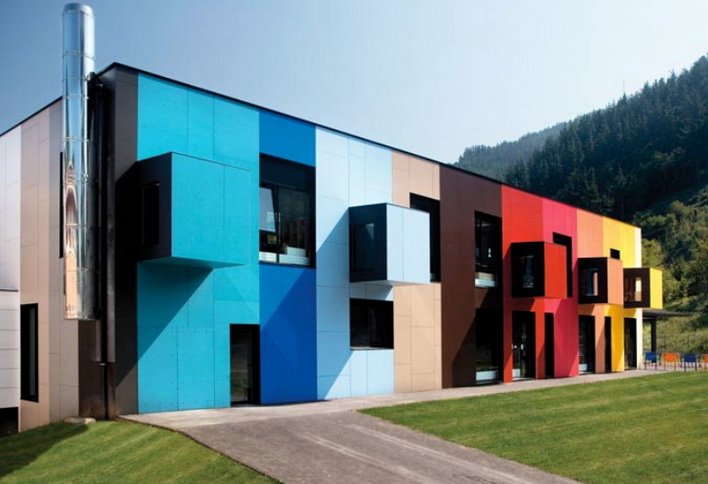
Self-cleaning facades
Facades of houses located closer than 50 meters from highways or streets with active traffic, as well as near polluting industries, are subject to rapid and significant pollution. Already after 2 - 3 months, the new facade in such places acquires a grayish tint from the dust that has settled and penetrated into the paint. Water drives dust into microcracks on the facade.The way out is to create a water-repellent surface on the facade. Then water and dirt will not penetrate under the top layer of the coating, and the facade will be able to retain its original appearance.
When water gets on such a surface, it does not linger on it, is not absorbed, but rolls down in drops. Even small precipitation that wetted such a wall completely wash away the dust from it.
Such a facade can be easily cleaned by washing it with a hose with water or a brush ...
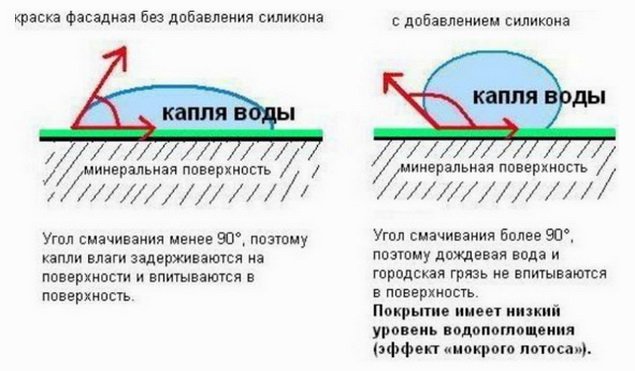
The self-cleaning (cleansable by rain) surface is created by silicone-based facade paints.
Or silicate and acrylic paints have similar properties, but with silicone and polymers.
But manufacturers often do not indicate such properties of products, apparently, purification is not yet popular with the consumer and does not generate demand.

Selection of the color of the facade paint
After there is a certainty with the type of paint and the required additional properties, it is necessary to solve a very difficult question of choosing a color.Only specialists, designers and architects will help to simplify the selection of colors for the facade. The facade of the house should be in harmony with the colors of the adjacent territory and buildings. At the same time, it should not be boring, plain monochromatic.
As a rule, the main color of the walls is accentuated by the contrast located at the entrance, and also complemented by another color (decor) scattered throughout the building, often associated with abutments and openings.
You can choose the color of the facade yourself, unless you copy it from the sample in the photo.
The task is to draw a palette of colors for the facade on paper. In comparison with it, the selection of the color of the paint will be made (selection of a standard shade under the number).
Cement, lime, silicate paints have the most limited selection of colors, mostly limited to pastel colors.
Silicone and acrylic paints, on the contrary, are distinguished by bright various shades.
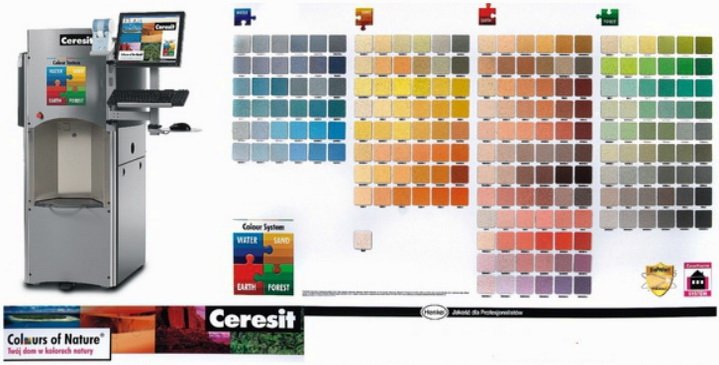
Tinting is carried out in large trading organizations on special tinting devices, where different colors are added to the original white paint base under computer control. The program determines the color and the number of tints to obtain the desired shade.
The shade of paint for the facade is selected from standard samples, each of which is assigned a number in the manufacturer's catalog. Having chosen a shade from the catalog that corresponds to the facade palette, in the future you can only name its number and the operator will make it again.
When deciding on the choice of a particular shade, you need to remember that dark and saturated colors on the facade will look even darker and more pronounced. Therefore, they often make two small batches of facade paint, but different in tone, and paint small fragments of the wall with them, then decide which color is best for a given building. Or they immediately make the paint a little lighter from the sample, which seemed to fit the palette.

